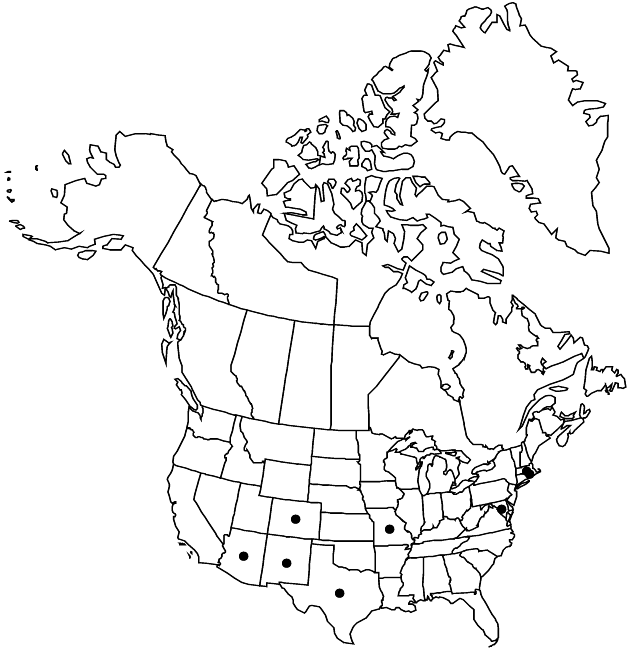Cosmos parviflorus
Syn. Pl. 2: 477. 1807.
Plants 30–90 cm, glabrous or sparsely pubescent. Leaves: petioles ca. 0.5 cm; blades 2.5–6.5 cm, ultimate lobes to 1 mm wide, margins usually spinulose-ciliate, apices acute to obtuse. Peduncles 10–30 cm. Calyculi of spreading to reflexed, linear-oblong to narrowly lanceolate bractlets 6–9 mm, apices acute. Involucres (3–)5–10(–15) mm diam. Phyllaries erect, oblong, 5–8 mm, apices acute. Ray corollas white to rose-pink or violet, laminae cuneate-obovate, 5–9 mm, apices dentate. Disc corollas 4–5 mm. Cypselae 9–16 mm, setulose; pappi of 2–4 erect awns 2–3 mm. 2n = 24.
Phenology: Flowering summer–fall.
Habitat: Open or forested slopes and canyons, sometimes in disturbed and cultivated areas
Elevation: 100–3000 m
Distribution

Ariz., Colo., Md., Mass., Mo., N.Mex., R.I., Tex., Mexico.
Discussion
Within the flora area, Cosmos parviflorus is native only in the southwestern United States.
Selected References
None.